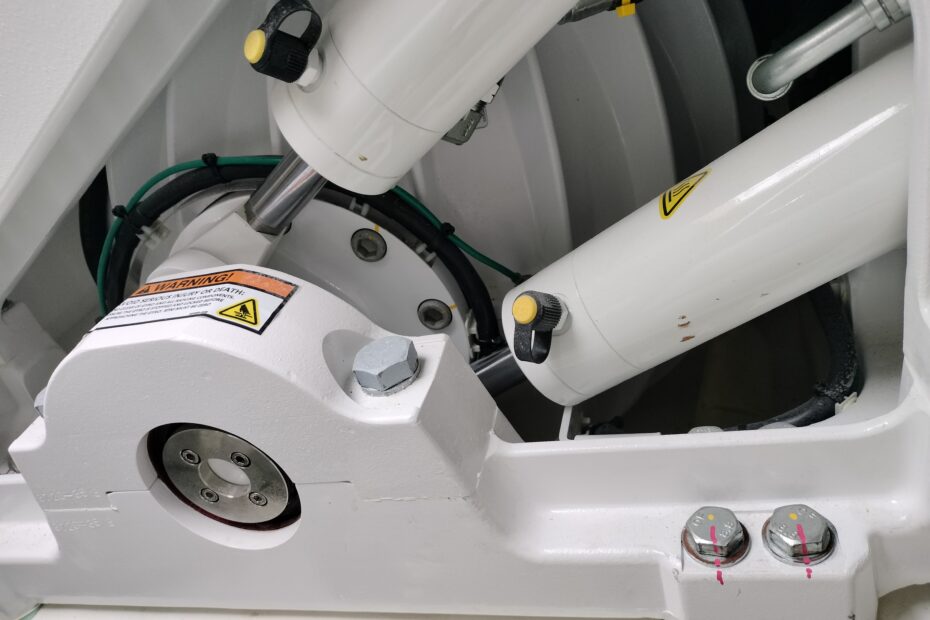Sea Trial of the Seakeeper System on a 12-Meter Motorboat with 20-Knot Mistral and Formed Seas
The Seakeeper system is an advanced stabilization technology for boats, designed to reduce the rolling motion caused by waves and improve stability and comfort during navigation. Its application is particularly useful for medium to large-sized vessels, such as 12-meter motorboats, that operate in challenging sea conditions or significant waves. In this sea trial, the Seakeeper system was tested on a 12-meter motorboat under 20-knot Mistral wind and formed seas to evaluate its effectiveness in a demanding boating environment.
Trial Conditions
During the trial, the sea was characterized by formed seas, with waves ranging from 2 to 3 meters in height, typical of conditions created by the Mistral wind. The wind was blowing from the northern quadrants at approximately 20 knots, creating a choppy sea surface that would make boat handling difficult without an appropriate stabilization system. The boat, a 12-meter motor yacht, was equipped with the latest-generation Seakeeper system, which uses a variable-speed gyroscope to counteract roll motion.
Trial Objectives
The purpose of the trial was to assess how well the Seakeeper system could reduce roll and improve stability and comfort on board during navigation in rough seas and strong winds. Specifically, the trial aimed to evaluate:
- Effectiveness in reducing roll.
- Improvement in comfort for crew and passengers.
- Seakeeper system’s response in formed seas with Mistral winds.
- Integration of the system with the overall boat behavior.
Phase 1: Conditions Without Seakeeper
Before activating the Seakeeper system, the boat was tested in natural conditions to provide a direct comparison between stabilizer on and off. Roll was evident in the presence of significant waves, and the Mistral wind pushed the boat sideways. The formed seas, which hit the boat’s hull, caused notable roll motion, especially when maneuvering or when the boat was navigating at an angle to the waves.
On board, comfort was compromised for the crew and passengers, with noticeable oscillations that made navigation less stable and sometimes uncomfortable, particularly when waves intersected or when the sea was formed. The dynamics of roll were exacerbated by the wind strength and the movement of the waves.
Phase 2: Activating the Seakeeper System
Once the Seakeeper system was activated, the improvement was immediately noticeable. The Seakeeper uses a gyroscope that, spinning at very high speeds, generates a precession force that counteracts roll motion. The speed of rotation and the system’s real-time response adjust automatically to sea conditions, allowing for very precise control over lateral oscillations.
Within minutes of activation, the roll motion was significantly reduced. The system’s effectiveness was evident in two main aspects:
- Reduction in Roll: The lateral oscillation that characterized the navigation without Seakeeper was substantially diminished. While the boat continued to move over the waves, it maintained a more stable and even position, with much more controlled and contained roll. In particular, the boat showed excellent stability when facing waves at difficult angles, such as those coming from the side or at 45-degree angles to the course.
- Improvement in Comfort: On-board comfort significantly improved. Passengers and crew noted a smoother, less fatiguing ride. The sensation of movement was much more contained, reducing fatigue and enhancing the overall experience during the passage.
Performance in Rough Seas
With the Mistral wind blowing at 20 knots and the formed seas creating an irregular sea surface, the Seakeeper system’s effectiveness was further put to the test. The boat navigated more efficiently, not only reducing roll but also minimizing abrupt pitching caused by larger waves. During turns or higher-speed maneuvers, the boat maintained a more predictable behavior, improving safety and ease of handling, particularly in rough seas.
Notably, stability was crucial when the boat encountered the largest waves, helping to avoid the risk of excessive heeling or rocking, both of which can significantly compromise safety during navigation in challenging conditions.
Benefits for Solo Navigation
An important aspect to note during this sea trial was the positive impact the Seakeeper system had on ease of handling, especially for solo navigators. In conditions of strong winds and rough seas, the ability to reduce roll and improve stability made it much easier for the skipper to maintain full control of the boat without constant adjustments to the steering. This made navigation safer and less stressful, particularly when operating alone.
Final Considerations
The sea trial of the Seakeeper system on a 12-meter motorboat, with 20-knot Mistral wind and formed seas, confirmed the system’s effectiveness in reducing roll and improving comfort on board. The Seakeeper proved to be particularly useful in rough sea conditions, where the wave movements could otherwise compromise boat stability and passenger well-being.
In summary, the introduction of the Seakeeper system had a positive impact on all phases of navigation, from low-speed maneuvers to high-speed operations, in challenging sea conditions. When used correctly, the Seakeeper system is a valuable asset for skippers and crews, offering a safer, more comfortable, and less fatiguing ride, especially in rough and windy conditions.
